
Please, support PV!
It allows to keep PV going, with more focus towards AI, but keeping be one of the few truly independent places.
It allows to keep PV going, with more focus towards AI, but keeping be one of the few truly independent places.
PTool 3.61d topic
-
sorry, probably a noob question here....when changing the bitrate of fh/h mode it says "remember to check higher bitrate patch". where do i find this to check it?
-
Here are the screen shots. The difference between the hacked 1080i High and the default 1080i Low setting is startling.
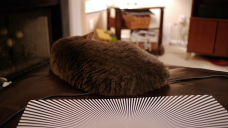
 Perfect00001 1080p High.png1920 x 1080 - 3M
Perfect00001 1080p High.png1920 x 1080 - 3M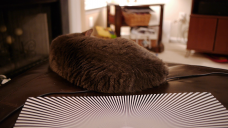
 Perfect00002 1080p Low.png1920 x 1080 - 3M
Perfect00002 1080p Low.png1920 x 1080 - 3M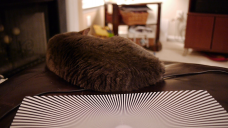
 Perfect00003 720p High.png1280 x 720 - 2M
Perfect00003 720p High.png1280 x 720 - 2M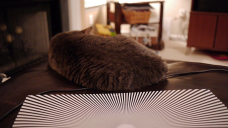
 Perfect00004 720p Low.png1280 x 720 - 1M
Perfect00004 720p Low.png1280 x 720 - 1M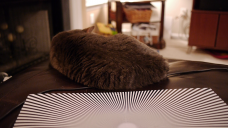
 Perfect00005 1080i High.png1920 x 1080 - 4M
Perfect00005 1080i High.png1920 x 1080 - 4M
 Perfect00006 1080i Low.png1920 x 1080 - 3M
Perfect00006 1080i Low.png1920 x 1080 - 3M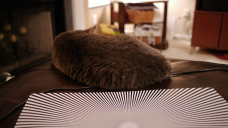
 Perfect00007 1080p 30 FPS.png1920 x 1080 - 3M
Perfect00007 1080p 30 FPS.png1920 x 1080 - 3M -
@RandyCatanach
Higher bitrate patch is one that is directly above current one :-) -
@nic2011
Here is the settings file that produced those images. However, please note that I changed the GOP on the 720p setting to 15 from 30. I haven't thoroughly tested that yet so I don't know if it is best or not. I picked 15 because I thought 30 was too long and I doubled the bit rate so I think halving the GOP is reasonable.
 setd.zip483B
setd.zip483B -
@Vitaliy_Kiselev Thanks for the quick reply! So I just have to check the FSH/SH option? Sorry, this is my first time ever doing this.....
Thanks so much for all your fine work! -
tHANKS :/ mpgxsvcd
-
-
???
-
@mpgxsvcd: "Here are the screen shots. The difference between the hacked 1080i High and the default 1080i Low setting is startling. "
I can't see any noticeable difference. Probably I need new glasses. Can you point out where can I see the difference? The only slight difference I see is in the background, where one of the video has more noise. Was it taken with higher ISO?!? -
@mpgxsvcd
Now I see a subtle difference. There is some kind of yellowish tone in one part of the fur in lower-bitrate 1080i picture. Comparison would be better if the cameras would be fixed on a tripod (due to interlaced footage). Otherwise any difference in camera movement between two shots might produce different interlaced artefacts (artifacts). -
A suggestion, keep the high-bitrate settings unmodified, and only change the low ones. Then you can shoot the same footage with the original and modified settings to compare without having to reflash (also useful if you need to get a shot on location and the modified setting screws up). I'll be trying that shortly.
EDIT: I see the higher-bitrate patch has to be ticked for the lower ones to work - @V., if I set a patch to the original bitrate (using simple end-user), will it set all encoding parameters exactly like the original? eg. 24H @ 22mbps = completely unmodified? -
@britco, nice, but see how the text in the Thomas's sign is way more blurry than the rest of the image? That's due to 4:2:0. I've attached the separated luma (monochrome) and chroma (colour) channels of your shot, chroma is only 1/4 resolution.
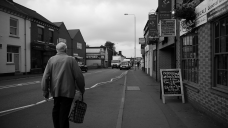
 luma.png1920 x 1080 - 1M
luma.png1920 x 1080 - 1M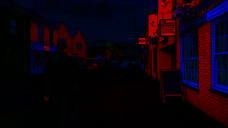
 chroma(x3).png1920 x 1080 - 911K
chroma(x3).png1920 x 1080 - 911K -
@Vitaliy_Kiselev Which trial version of Elecard StreamEye should I get? The one labeled just "Elecard StreamEye"?
-
So I finally applied the hack - and ticked off all the 'user' friendly settings. One funny thing I noticed is the write to card speed at the need of each clipped has been significantly reduced on my Transcend C10/16G. That little red SD card thing goes away in 1/3rd the time it did before the patch - but the lag in RAW stills is still the same.
-
Aha! i discovered that if i start shooting in SH on a really complex scene (speaker grille, window screen) that I get the "card too slow message" within 15 seconds (using SH set to 32mbps - like in mpgxsvcd's settings file, but without the GOP modification). However, if i begin the shot on a less complex scene for the first 3-5 seconds, then pan to shooting the speaker grill or window screen, it works fine and I can shoot that as long as i want it seems.
[Settings]
Version increment=1
Video Bitrate FSH/SH=32000000
Video Bitrate 24H=32000000
This topic is closed.
← All Discussions Start New Topic


Howdy, Stranger!
It looks like you're new here. If you want to get involved, click one of these buttons!
Categories
- Topics List23,964
- Blog5,723
- General and News1,342
- Hacks and Patches1,151
- ↳ Top Settings33
- ↳ Beginners254
- ↳ Archives402
- ↳ Hacks News and Development56
- Cameras2,361
- ↳ Panasonic990
- ↳ Canon118
- ↳ Sony154
- ↳ Nikon96
- ↳ Pentax and Samsung70
- ↳ Olympus and Fujifilm99
- ↳ Compacts and Camcorders299
- ↳ Smartphones for video97
- ↳ Pro Video Cameras191
- ↳ BlackMagic and other raw cameras121
- Skill1,961
- ↳ Business and distribution66
- ↳ Preparation, scripts and legal38
- ↳ Art149
- ↳ Import, Convert, Exporting291
- ↳ Editors191
- ↳ Effects and stunts115
- ↳ Color grading197
- ↳ Sound and Music280
- ↳ Lighting96
- ↳ Software and storage tips267
- Gear5,414
- ↳ Filters, Adapters, Matte boxes344
- ↳ Lenses1,579
- ↳ Follow focus and gears93
- ↳ Sound498
- ↳ Lighting gear314
- ↳ Camera movement230
- ↳ Gimbals and copters302
- ↳ Rigs and related stuff272
- ↳ Power solutions83
- ↳ Monitors and viewfinders339
- ↳ Tripods and fluid heads139
- ↳ Storage286
- ↳ Computers and studio gear560
- ↳ VR and 3D248
- Showcase1,859
- Marketplace2,834
- Offtopic1,319







